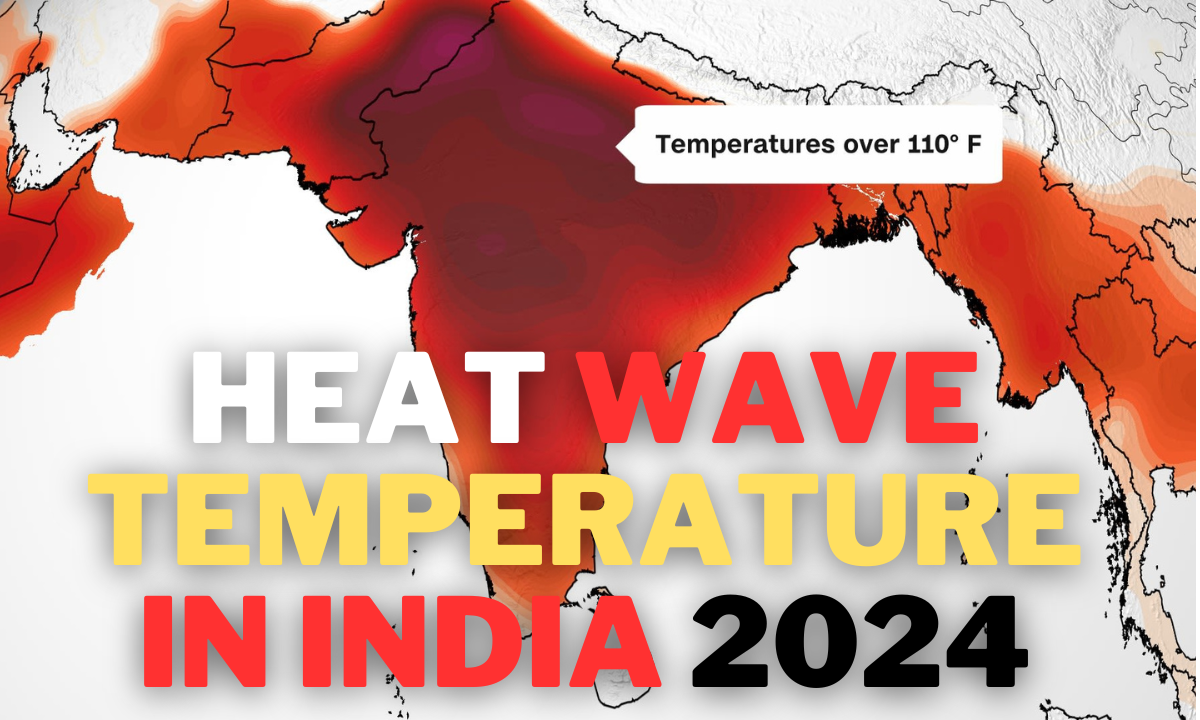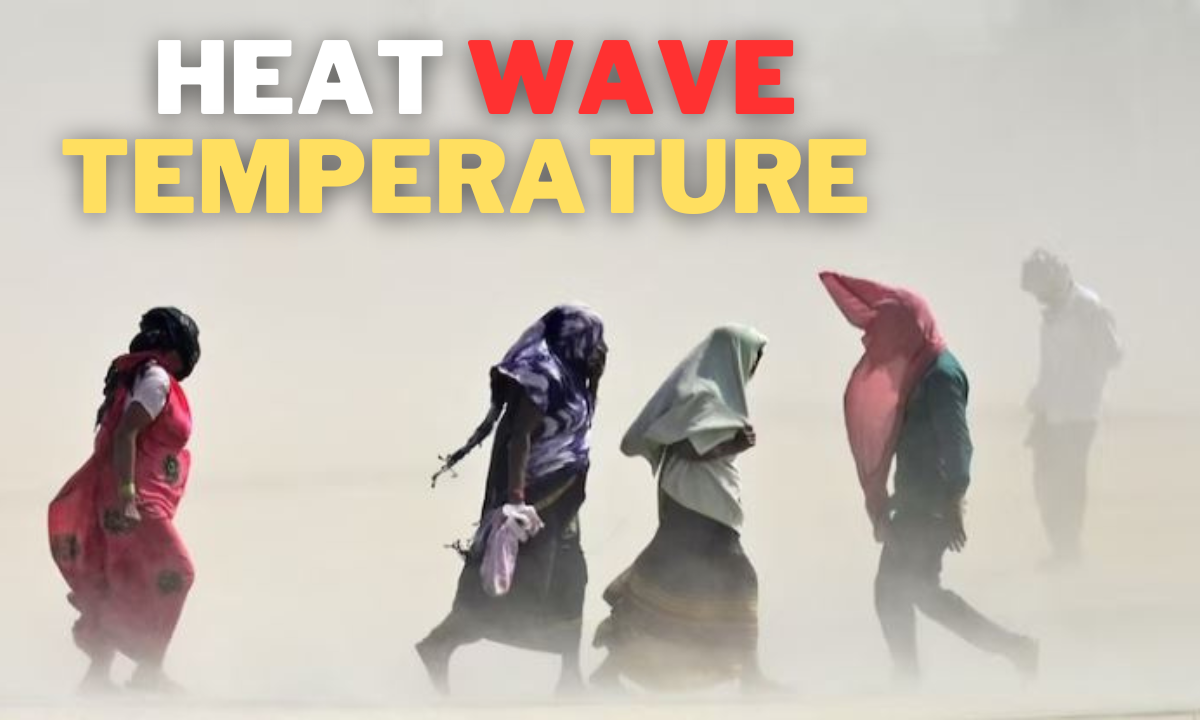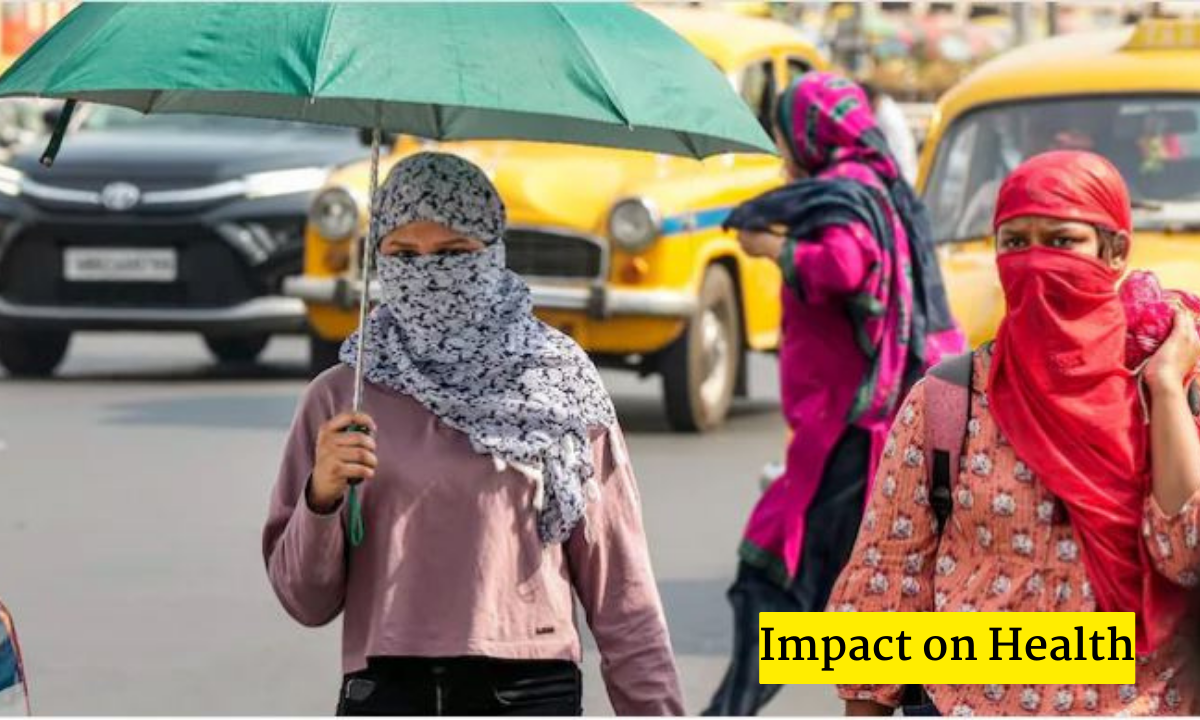Heat Wave Temperature in India 2024
Heat waves in India(Heat wave temperature)are becoming an increasingly severe and frequent phenomenon. As temperatures soar to unprecedented heights, understanding the implications and causes of these extreme weather events is crucial. This article delves into the heat wave temperatures in India for 2024, examining their causes, impacts, and the measures being taken to mitigate their effects. Read more..
Historical Context of Heat Waves in India
India has a long history of heat waves, with several notable instances causing widespread devastation. For instance, the heat wave of 2015 resulted in over 2,500 deaths, highlighting the severe impact on human health. Over the years, data has shown a clear trend of rising temperatures, exacerbated by factors such as global warming and urbanization.
Current Scenario: Heat Wave Temperature in India 2024
As of 2024, several regions in India have reported record-breaking temperatures. Northern and central states, including Rajasthan, Uttar Pradesh, and Madhya Pradesh, are particularly affected. Delhi has recorded temperatures exceeding 45°C (113°F), while rural areas are experiencing even higher readings. The pattern indicates not only higher peak temperatures but also prolonged heat wave durations.
Upcoming heat wave in India
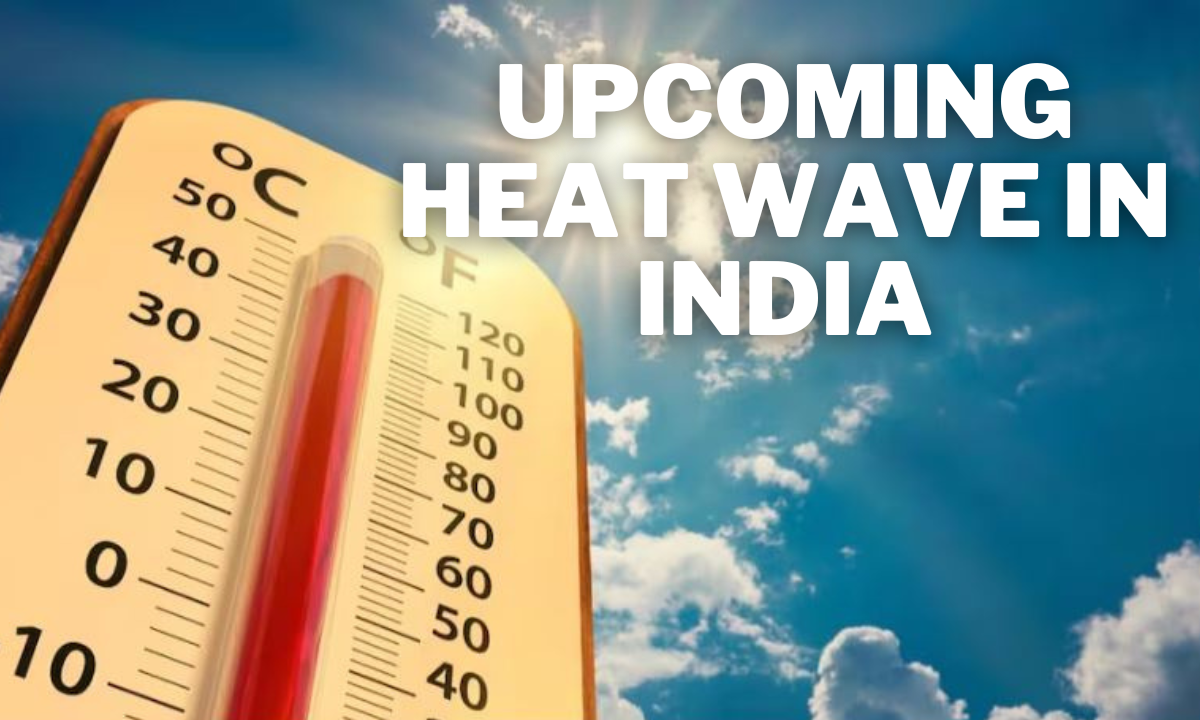 India is expected to face significant heatwave conditions in the upcoming weeks of June 2024. The India Meteorological Department (IMD) has forecasted high temperatures and issued several alerts to prepare for the intense heat.
India is expected to face significant heatwave conditions in the upcoming weeks of June 2024. The India Meteorological Department (IMD) has forecasted high temperatures and issued several alerts to prepare for the intense heat.
- Heatwave Alerts:
- Red Alert: Issued for West Bengal and Odisha until the end of the month.
- Orange Alert: Raised for sub-Himalayan West Bengal, Bihar, and interior Karnataka (MoneyIndia).
- Temperature Projections:
- Eastern India, including states like Odisha and West Bengal, will experience a rise in maximum temperatures by 2-3°C in the next 48 hours.
- Central and southern regions, including Maharashtra and Karnataka, are also expected to face heatwave conditions over the next five days (MoneyIndia).
- General Conditions:
- Temperatures across most parts of India are expected to be above normal throughout June. Northwest India, Central India, and parts of East India are particularly affected (India Meteorological Department) (MoneyIndia).
India heat wave 2024 map
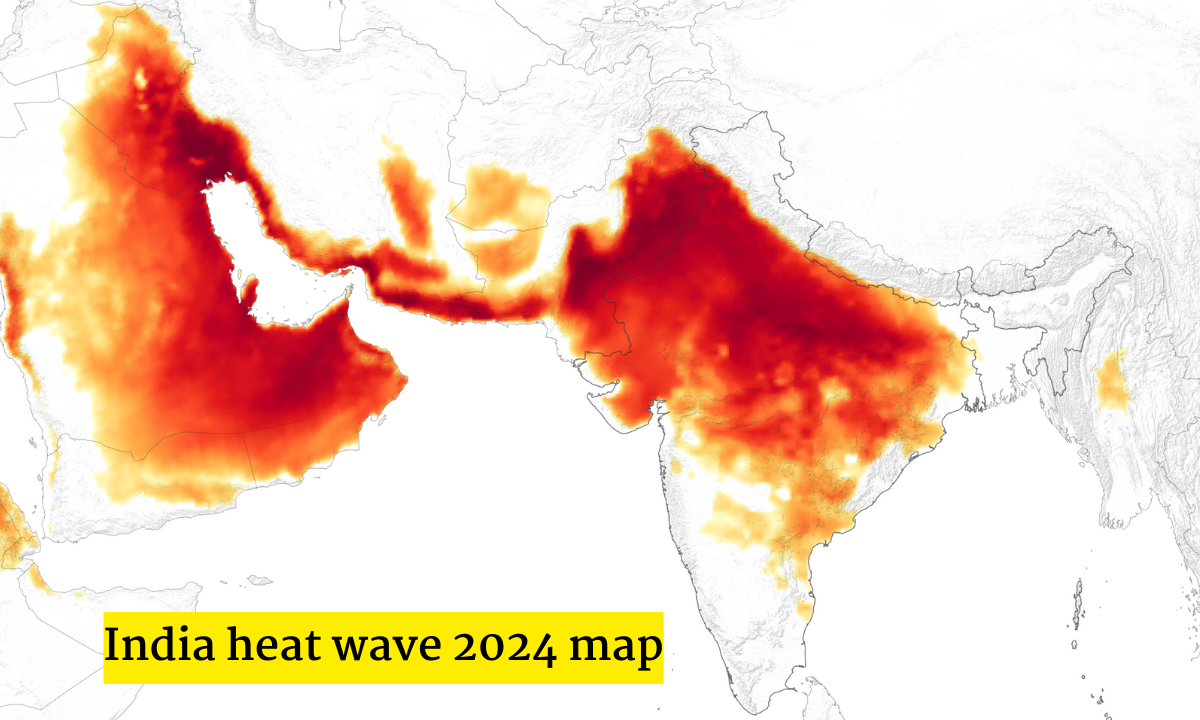 India(Heat wave temperature) is currently experiencing a significant heatwave in 2024, affecting multiple regions across the country. The India Meteorological Department (IMD) has issued several warnings and alerts for different states, including severe heatwave conditions in Northwest, Central, and East India.
India(Heat wave temperature) is currently experiencing a significant heatwave in 2024, affecting multiple regions across the country. The India Meteorological Department (IMD) has issued several warnings and alerts for different states, including severe heatwave conditions in Northwest, Central, and East India.
- Affected Regions:
- Northwest India: This includes parts of Rajasthan, Haryana, and Delhi.
- Central India: States like Madhya Pradesh and Chhattisgarh are under severe heatwave conditions.
- East India: Bihar, Jharkhand, Odisha, and West Bengal are experiencing intense heat.
- Heatwave Alerts:
- Red Alerts: These have been issued for states like Bihar and Odisha, indicating extremely severe conditions that require immediate action to prevent heat-related illnesses and deaths.
- Orange Alerts: Issued for regions with forecasted temperatures expected to cause moderate to severe heatwave conditions.
- Current Conditions:
- Cities such as New Delhi are facing temperatures exceeding 34°C, with heat indices making it feel even hotter (India Meteorological Department) (Hindustan Times).
- Resources:
- The IMD provides district-wise and station-wise heatwave warnings, which are updated regularly. You can view these warnings and interactive maps of current conditions on their official website (India Meteorological Department).
India heat wave wiki
 India(Heat wave temperature) is experiencing an intense heatwave in 2024, with temperatures expected to break records. The India Meteorological Department (IMD) has issued a “red alert” for West Bengal and Odisha, and an “orange alert” for sub-Himalayan West Bengal, Bihar, and interior Karnataka. Heatwave to severe heatwave conditions are anticipated in eastern and southern India, with maximum temperatures rising by 2-3°C over East India in the next 48 hours. These conditions are expected to spread to Maharashtra and large parts of southern India in the coming days (MoneyIndia).
India(Heat wave temperature) is experiencing an intense heatwave in 2024, with temperatures expected to break records. The India Meteorological Department (IMD) has issued a “red alert” for West Bengal and Odisha, and an “orange alert” for sub-Himalayan West Bengal, Bihar, and interior Karnataka. Heatwave to severe heatwave conditions are anticipated in eastern and southern India, with maximum temperatures rising by 2-3°C over East India in the next 48 hours. These conditions are expected to spread to Maharashtra and large parts of southern India in the coming days (MoneyIndia).
The current heatwave(Heat wave temperature) is part of a broader trend affecting Southeast Asia, which has seen record-breaking temperatures in several countries. For instance, Thailand has already reported 30 heat-related deaths, and Vietnam is experiencing its longest heatwave in 30 years, impacting crop yields and causing mass fish deaths due to dwindling water levels (Wikipedia).
Historically, India has faced severe heatwaves, such as the 2015 heatwave that caused thousands of deaths and recorded temperatures as high as 48°C in Khammam. These events highlight the severe impact of extreme heat on public health and infrastructure (Wikipedia) (Wikipedia).
Causes of Heat Waves
 Climate Change and Global Warming
Climate Change and Global Warming
The primary driver behind the intensifying heat waves (Heat wave temperature) is climate change. Increased greenhouse gas emissions have led to global temperature rises, with India experiencing the brunt due to its geographical and socio-economic conditions.
Urbanization and Industrialization
Rapid urbanization and industrialization contribute significantly to heat waves. Urban areas with extensive concrete structures trap heat, creating urban heat islands. Additionally, industrial activities release pollutants that exacerbate the greenhouse effect.
Natural Weather Patterns
Natural phenomena, such as El Niño, also play a role in the frequency and severity of heat waves. These patterns disrupt normal weather cycles, leading to extreme temperatures.
Impact on Health
Heat waves (Heat wave temperature) pose a serious health risk, causing conditions like heat exhaustion, heatstroke, and dehydration. Hospitals in affected regions have reported a surge in cases, with vulnerable populations such as the elderly, children, and those with preexisting health conditions at higher risk.
Vulnerable Populations
Certain groups are more susceptible to the adverse effects of heat waves. These include outdoor workers, the homeless, and low-income families who may lack access to adequate cooling facilities.
Preventative Measures
To combat health risks, authorities recommend staying hydrated, avoiding outdoor activities during peak heat, and using cooling methods like fans, air conditioners, or traditional techniques like wet cloths and cool baths.
Impact on Agriculture
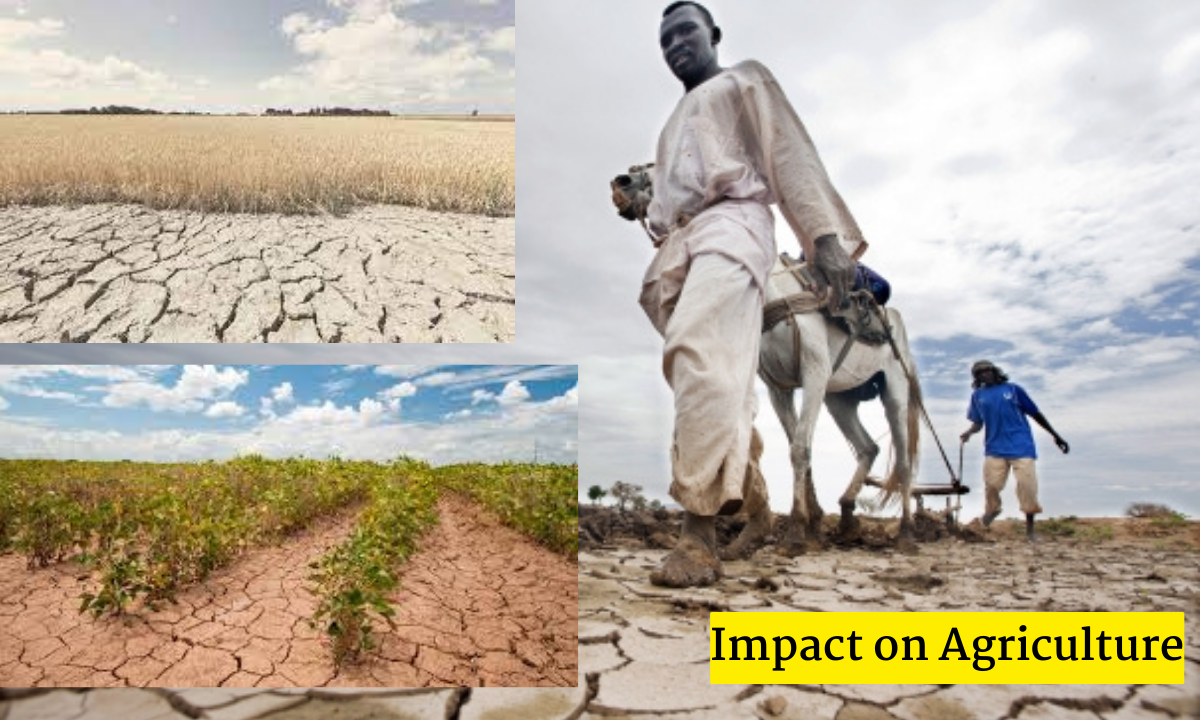 Crop Damage and Yield Reduction
Crop Damage and Yield Reduction
The agricultural sector is severely affected by heat waves. High temperatures lead to crop failures and reduced yields, particularly for heat-sensitive crops like wheat and rice. This has a direct impact on food security and farmer incomes.
Economic Consequences for Farmers
Farmers face significant economic losses due to damaged crops and increased irrigation costs. The heat also stresses livestock, reducing milk production and overall livestock health.
Adaptation Strategies
Farmers are adopting various strategies to cope with heat waves, such as shifting to heat-resistant crop varieties, changing planting schedules, and employing efficient irrigation techniques.
Impact on Environment
Water Scarcity and Droughts
Heat waves(Heat wave temperature) exacerbate water scarcity issues, leading to droughts in several regions. Rivers, lakes, and groundwater sources are drying up, impacting both human consumption and agricultural needs.
Wildlife and Ecosystems
The environment suffers as wildlife struggles to find water and suitable habitats. Forest fires become more frequent, further degrading ecosystems and biodiversity.
Long-term Environmental Effects
Persistent heat waves can lead to long-term environmental changes, including desertification and loss of fertile land, making certain regions uninhabitable over time.
Government and Community Response
National Heat Action Plan
The Indian(Heat wave temperature) government has implemented a National Heat Action Plan, focusing on early warning systems, public awareness campaigns, and healthcare preparedness to mitigate heat wave (Heat wave temperature) impacts.
State-Level Initiatives
States have tailored their strategies to local conditions. For example, Gujarat’s “Cool Roof” initiative aims to reduce indoor temperatures by using reflective materials in building construction.
Community Awareness Programs
Community programs educate the public on heat wave preparedness, emphasizing the importance of hydration, recognizing heat-related illnesses, and using cooling techniques.
Technological Interventions
 Weather Forecasting and Early Warning Systems
Weather Forecasting and Early Warning Systems
Advancements in meteorological technology enable more accurate heat wave forecasting and early warning systems, allowing authorities to issue timely alerts and preventive measures.
Cooling Technologies
Innovations in cooling technologies, such as energy-efficient air conditioners and solar-powered coolers, are helping mitigate the impact of heat waves, especially in rural areas.
Renewable Energy Solutions
Renewable energy sources, like solar and wind power, provide sustainable alternatives to reduce the reliance on fossil fuels, thereby mitigating climate change and its associated heat waves.
Personal Safety Tips
 Staying Hydrated
Staying Hydrated
Drinking plenty of water is crucial during heat waves(Heat wave temperature). It’s recommended to avoid caffeine and alcohol, as they can lead to dehydration.
Cooling Techniques at Home
Using fans, air conditioners, and traditional methods like wet cloths and cool baths can help maintain a comfortable indoor temperature. Closing curtains during the day and ventilating homes at night also help.
Recognizing Signs of Heat Stroke
It’s essential to recognize symptoms of heat-related illnesses, such as dizziness, headache, rapid heartbeat, and nausea, and seek medical attention immediately if they occur.
The Future Outlook
Predictions for Future Heat Waves
Experts predict that heat waves will become more frequent and severe due to ongoing climate change. Proactive measures and long-term planning are essential to mitigate their impact.
Long-term Climate Goals
India(Heat wave temperature) is committed to international climate agreements, aiming to reduce carbon emissions and transition to renewable energy to combat climate change and its effects on heat waves.
Potential Solutions
Innovative solutions, such as green infrastructure, urban planning for cooler cities, and large-scale afforestation, are being explored to reduce heat wave impacts and improve resilience.
International Perspective
Comparison with Other Countries
Countries like Australia and the USA also face severe heat waves and have implemented various strategies to cope. Comparing these approaches provides valuable insights for India.
Global Initiatives to Combat Heat Waves
International collaborations and knowledge-sharing on heat wave management can help India adopt best practices and technologies to tackle this growing challenge.
Case Studies
Specific Incidents from 2024
In 2024, regions like Rajasthan and Delhi witnessed extreme temperatures, leading to numerous heat-related illnesses and fatalities. These incidents underscore the urgency of effective mitigation strategies.
Success Stories of Mitigation
Despite challenges, there are success stories where proactive measures have saved lives and reduced heat wave impacts(Heat wave temperature). For instance, Ahmedabad’s Heat Action Plan has significantly reduced heat-related deaths since its implementation.
Conclusion
In conclusion, heat waves(Heat wave temperature) in India are a critical issue that demands immediate attention and action. Understanding the causes, impacts, and solutions is essential for building resilience against this growing threat. By combining government efforts, community participation, and technological advancements, India can effectively combat heat waves(Heat wave temperature) and protect its population and environment.
FAQs
- What defines a heat wave in India?
A heat wave in India(Heat wave temperature) is defined by temperatures exceeding 40°C (104°F) in the plains and 30°C (86°F) in hilly regions for consecutive days, significantly above normal. - How can people stay safe when there is a heat wave(Heat wave temperature) ?
Staying hydrated, avoiding outdoor activities during peak heat, using cooling techniques, and recognizing signs of heat-related illnesses are key steps to protect oneself. - Why is there a heat wave in India ?
This season, there were over twice as many heatwave days (Heat wave temperature) in northwest and eastern India as there usually were. This is mostly due to fewer non-monsoon thundershowers and warm winds that blew into India from nearby desert regions. - Why is it so hot in India right now in 2024 ?
This is primarily due to two factors. First of all, 2024 was an El Niño year to start. El Niño, a meteorological phenomenon, denotes an atypical elevation of surface temperatures in the equatorial Pacific Ocean, resulting in intense heat waves across numerous regions of the globe and the ocean. - Which city has more heat in India ?
The temperature in the Mungeshpur suburb of New Delhi on Wednesday afternoon broke the previous national record set in the Rajasthani desert by more than one degree Celsius, according to the India Meteorological Department (IMD), which issued a warning of “severe heatwave conditions.” - Why is it hotter in India?
While an increase in temperature (Heat wave temperature) in May and June is typical, meteorologists from India’s weather service said that these events are typically regulated by recurring western disturbances—that is, weather systems that originate in the Mediterranean Sea and carry with them winds that are heavy with moisture. - How bad is the heat in India?
The poor Chanakyapuri suburb in Delhi has no fresh water. The temperature is the highest it has ever been: 49.9 degrees Celsius, or 121 degrees Fahrenheit. The tin roofs of the shanties receive a belting sun. People in need wait for the delivery of drinking water. - What is causing our heat wave?
The western United States, including California, is seeing more frequent, prolonged, and deadly heat waves due to climate change. - Which Indian states are impacted by the heat wave ?
States like Madhya Pradesh, Uttar Pradesh, Rajasthan, and Odisha are also reporting cases of heat-related deaths. Bihar, Odisha, and Jharkhand are the worst hit.
